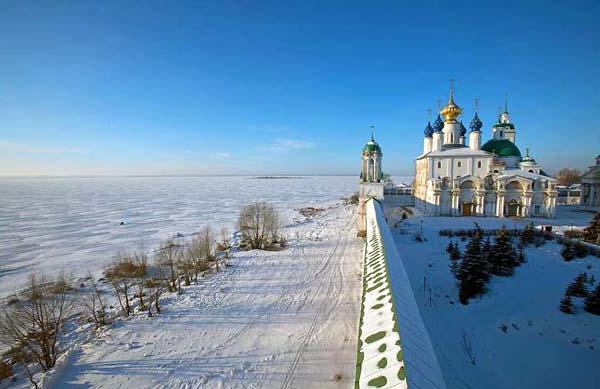Vologda is one of the few cities in the north whose history goes back to the pre-Mongol era of Kievan Rus. It is believed that the first settlement on this site was founded in the middle of the XII century. He is associated with the establishment of a monastery here in the name of the Holy Trinity. This version is confirmed by archaeological excavations during which artifacts were found. The earliest of them really date back to the 12th century. The first reliable written mention of Vologda dates back to the middle of the XIII century (in a document of 1264). During this period, the settlement is experiencing very
intensive development, and the population of Vologda is growing rapidly. It begins to attract the attention of neighbors and local residents periodically find themselves either under the influence of Novgorod or Moscow.
Within the borders of the Moscow kingdom
In the XV century, Vologda finally finds itself within the borders of Moscow territorial possessions. Such a fierce struggle for the city was due to its very advantageous geographical position. The fact is that it was an ideal transshipment point on trade routes from north to south. Merchants brought salt, furs, wax, fish, hemp here. The population of the city of Vologda was engaged in crafts, dressing flax and leather in the first place. And it could always offer merchants actual goods. The period of the highest prosperity of old Vologda was the XVI century, during which the city turned into the largest northern mining and distribution point of salt.

It was salt that became the main article of export and income of the local population. Then, by the number of inhabitants, the city became one of the largest throughout the country. It is interesting that during this period Vologda residents almost became capital residents. Since 1567, Ivan the Terrible regularly visits the city for several years. There are opinions that Moscow of that period seemed to the tsar as a concentration of dangerous opposition forces, because he had very difficult relations with the boyars, and Vologda could see him as the new capital of the kingdom. However, the successes of the oprichnina, obviously, made no sense transferring the capital to the north.
Vologda residents in the Romanov empire
In 1612, the city was burned as a result of an attack by the Poles. However, it was relatively soon restored to its former size and by the middle of the century had regained its former value. So, by 1681, the population of Vologda totaled more than four thousand inhabitants. The vast majority (about 80%) of the local population during this period were posad people. A slightly less significant layer was the clergy and ministers: 14% and 5%, respectively. And, of course, the local aristocracy (1%). Prosperity continued until the beginning of the 18th century. However, during this period this settlement gradually begins to lose its commercial and strategic importance. This was due to the foundation by Peter I of the new capital on the Neva. The population of Vologda is inevitably smaller. If in 1713 there were more than ten thousand inhabitants, in 1782 there were already seven thousand. The same trend continued throughout the next century. Even the holding of the railway with the Arkhangelsk-Moscow communication could not cause revival.

Residents of Vologda in the Soviet period
At the beginning of the XX century, the population of the city is growing rapidly. During the revolution also at the expense of refugees. According to the state census, in 1926 the population of the city was 26 thousand people, 95% of whom were Russians. In the thirties, the city survived industrialization, which significantly revived it. A new boom in the life of the city was observed in the 60s, when new industrial facilities were founded here: a poultry farm, optical-mechanical, easel and bearing plants. And already in 1989, the population of Vologda reached the mark of 280 thousand people.
Modern residents
For the past two decades, the fate of the city has been reminiscent of the situation in the rest of provincial Russia: the difficult nineties, the suspension of many industrial enterprises. And a gradual adaptation to the conditions of a market economy as early as 2000. And with it the revitalization of social life. According to recent data, in recent years, the population of the city is even experiencing some growth. So, the population of Vologda in 2013 is 306 thousand people, most of whom are statistically Russian (more than 97%). Interestingly, among the modern population of the city, only 44% of men.